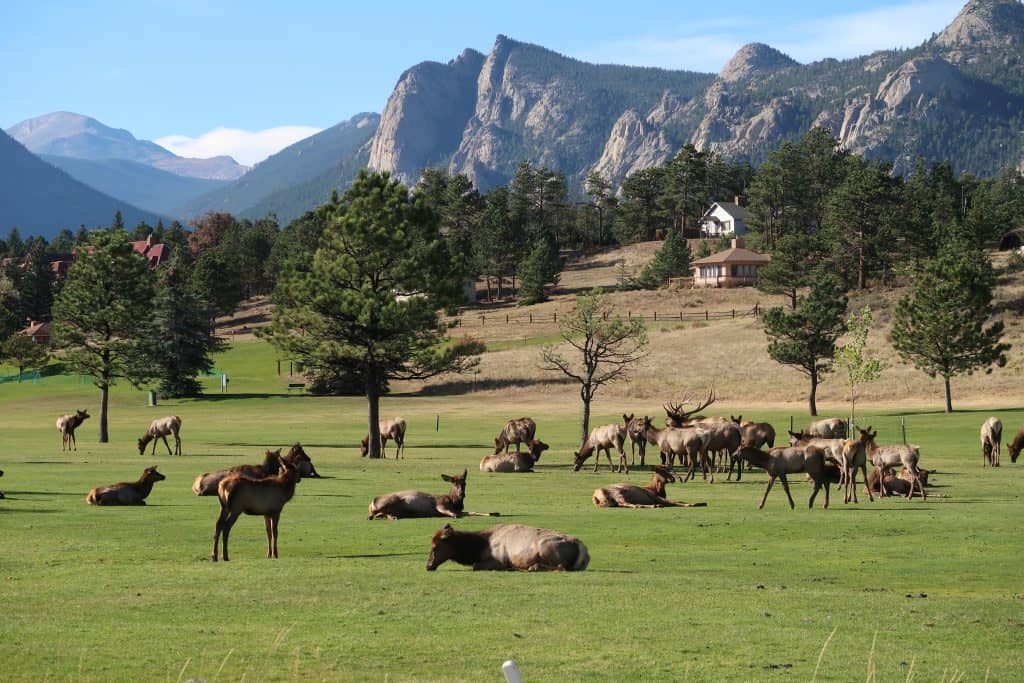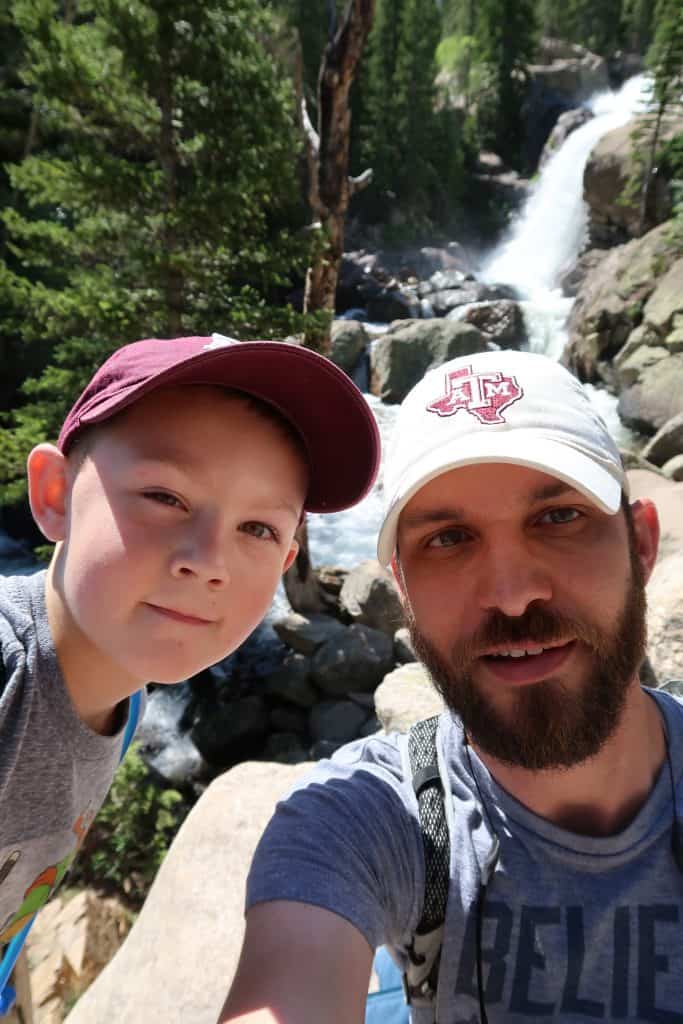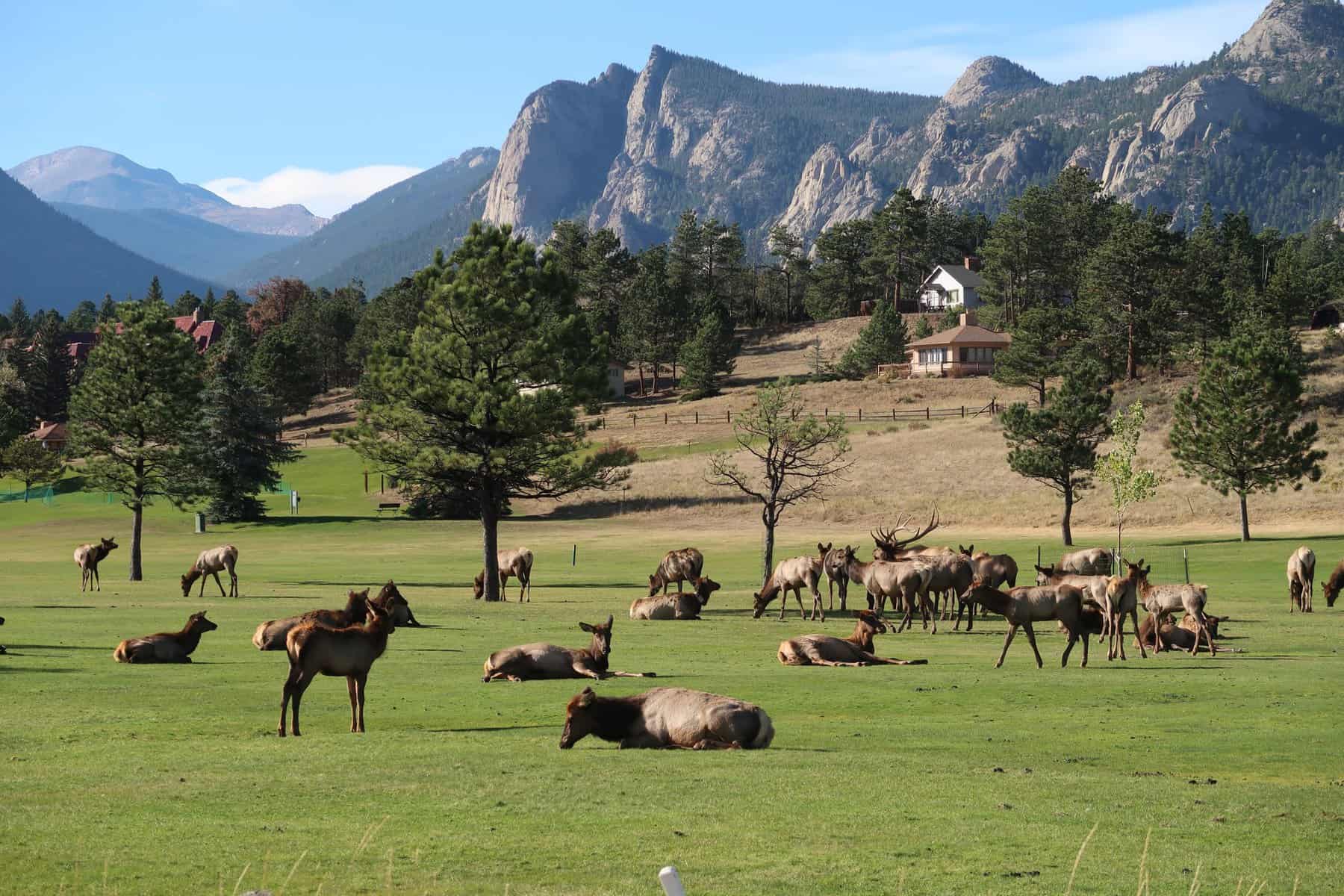Rocky Mountain National Park is a popular destination for outdoor enthusiasts and nature lovers alike. With over 415 square miles of breathtaking landscapes, diverse wildlife, and rich history, there’s no shortage of things to see and do in the park. And one of the best ways to experience all that Rocky Mountain has to offer is through a ranger-led tour.
The tours at Rocky Mountain are carefully crafted and offered seasonally. The winter months are slow and primarily focus on snow-shoeing tours.
In April, more programs are added, and by the summer months, the park is in full visitor mode with endless programming for any interest. In this post, we’ll highlight the top 10 ranger-led tours at Rocky Mountain National Park.
1. Bear Necessities:
Rocky Mountain National Park is home to a significant population of black bears. These bears are known for their distinctive black fur and can weigh up to 600 pounds.
They are omnivores and feed on a variety of foods including berries, nuts, insects, and small mammals. In the park, black bears can be found in different habitats from forests to meadows.
Visitors to the park are advised to take precautions when in bear country. Bear safety practices include keeping a safe distance, making noise while hiking, and properly storing food and scented items.
While encounters with black bears are generally rare, it is important to respect these animals and their habitat to ensure their continued survival in the park.
Join a ranger on this tour to learn about black bears, their behavior, and how to safely coexist with them. You’ll explore bear habitats and learn about their diet and hibernation patterns.
2. Alpine Adventure:
The alpine tundra in Rocky Mountain National Park is a unique ecosystem that is home to a variety of specialized plants and animals. The high elevation and harsh weather conditions create a challenging environment for life to survive.
Some of the plants that are adapted to this environment include alpine forget-me-nots, sky pilots, and alpine avens. These plants have developed traits such as deep roots to access water, thick leaves to retain moisture, and short growth cycles to take advantage of the short growing season.
The animals that inhabit the alpine tundra include mountain goats, bighorn sheep, and pikas. These animals have adapted to the cold, windy, and often snow-covered environment by developing thick fur, specialized hooves for traction, and a diet that includes tough alpine vegetation.
The alpine tundra in Rocky Mountain National Park is a delicate ecosystem that requires protection and conservation to ensure the survival of these unique plants and animals.
Take a hike through the park’s alpine tundra and learn about the unique plants and animals that call this high-altitude environment home. This tour offers stunning views of the surrounding peaks and valleys.
3. Elk Bugling:

Elk are one of the most iconic animals in Rocky Mountain National Park, and the park is home to a significant population of these majestic animals. The fall season in the park is also known as the rut, or mating season, for the elk. During this time, male elk, known as bulls, will compete for the attention of females, or cows, by bugling, displaying their antlers, and engaging in physical fights with other males.
Visitors to the park during the rutting season can witness this behavior, which can be both thrilling and dangerous. Park rangers advise visitors to keep a safe distance from the elk and to never approach them, as they are wild animals and can be unpredictable.
The rutting season is an important time for the elk population, as it ensures the continuation of the species. The park works to protect and conserve the elk and their habitat to ensure their continued survival for generations to come.
Join a ranger at dawn or dusk during elk rutting season to hear the distinctive bugle of bull elk. You’ll learn about the elk’s mating behavior and the role they play in the park’s ecosystem.
4. Mountain Lion Patrol:
Mountain lions, also known as cougars, are one of the apex predators in Rocky Mountain National Park. These large cats are known for their stealthy behavior and are rarely seen by visitors to the park.
They prefer to hunt at dawn and dusk. Their diet includes deer, elk, and other small mammals. Mountain lions require a large home range, and their habitat in the park consists of dense forests and rocky cliffs.
The park’s mountain lion population is carefully monitored by park rangers, who work to protect the animals and their habitat. Visitors to the park are advised to be cautious when hiking in mountain lion habitat and to avoid hiking alone, especially during dawn and dusk.
While mountain lion attacks on humans are rare, it is important to respect these animals and their habitat to ensure their continued survival in the park.
Take a night hike with a ranger to search for signs of mountain lions and learn about their behavior and habitat. This tour provides an unforgettable experience and the opportunity to observe nocturnal wildlife.
5. Snowshoe Ecology:
The snowy environment of Rocky Mountain National Park provides a unique habitat for a variety of plants and animals. One of the most iconic animals that thrive in this environment is the American pika, a small, furry mammal that lives in rocky areas and feeds on vegetation.
Other animals that are adapted to snowy environments include the snowshoe hare, the ptarmigan, and the elusive lynx. These animals have developed specialized traits such as thick fur, snowshoe-like paws, and the ability to change the color of their fur to blend in with their surroundings.
The snowy environment also supports a variety of plant life, including alpine sunflowers, dwarf willows, and lichens. These plants have adapted to the harsh conditions by developing deep roots, thick stems, and the ability to photosynthesize through the snow.
The snowy environment of Rocky Mountain National Park is a delicate ecosystem that requires protection and conservation to ensure the survival of these unique plants and animals.
Explore the park’s winter wonderland on snowshoes and learn about the plants and animals that thrive in this cold and snowy environment. This tour offers a unique way to experience the park during the winter months.

6. Historic Fall River Road:
Fall River Road in Rocky Mountain National Park is a historic route that winds through the park’s rugged terrain, offering stunning views of the surrounding mountains and valleys. The road was built in 1913 and was one of the earliest routes through the park, connecting Estes Park with the Alpine Visitor Center at the summit of Trail Ridge Road.
The road is unpaved and steep with sharp turns and switchbacks, making it a challenging drive for visitors. Along the way, visitors can stop at the Alpine Visitor Center and enjoy scenic views of the park’s glaciers, alpine meadows, and wildlife.
Fall River Road is closed in the winter due to snow and ice, but it is open during the summer months, providing visitors with a unique opportunity to experience the park’s natural beauty and history.
Travel back in time on this tour of the park’s first motor route. You’ll learn about the history of the road and the people who built it, as well as the geology and ecology of the surrounding area.
7. Birding Adventure:
Rocky Mountain National Park is a prime location for birding, with over 300 species of birds recorded within the park. The park’s diverse ecosystems, ranging from alpine tundra to montane forests, provide habitat for a wide variety of birds.
Some of the birds that can be found in the park include the American dipper, the white-tailed ptarmigan, the Clark’s nutcracker, and the yellow-rumped warbler. Visitors to the park can participate in guided birding tours or explore on their own. There are opportunities for birding throughout the park including at the Beaver Meadows Visitor Center and the Moraine Park Discovery Center.
Join a ranger to search for and identify the diverse bird species that call Rocky Mountain National Park home. You’ll learn about the role birds play in the park’s ecosystem and how to spot them in their natural habitats.
8. Geology Rocks:
The geology of Rocky Mountain National Park is rich and diverse, shaped by millions of years of tectonic activity and erosion. The park is situated on the eastern slope of the Rocky Mountains with elevations ranging from 7,500 to over 14,000 feet.
The park’s geologic formations include ancient rocks that date back over 1.7 billion years, as well as more recent deposits from glaciers and volcanic activity. One of the most prominent geologic features of the park is the alpine tundra. This is a high-altitude ecosystem with rocky outcrops and sparse vegetation.
The park is also home to numerous glaciers, including the Andrews and Tyndall Glaciers which have shaped the landscape over time.
Discover the park’s fascinating geology on this tour, which includes a visit to the park’s fossil exhibit and a hike through unique rock formations. You’ll learn about the forces that shaped the park’s landscapes and the rock layers that reveal its history.
9. Wild Basin Waterfalls:
Rocky Mountain National Park is home to many beautiful waterfalls, each with its unique characteristics and charm. One of the most popular waterfalls in the park is Alberta Falls, located near the Glacier Gorge Trailhead.
This 30-foot waterfall is easily accessible via a short, scenic hike and is surrounded by stunning alpine scenery. This is one of our top hikes for kids as mentioned in our top hikes for kids at Rocky Mountain National Park.
Another notable waterfall in the park is Ouzel Falls, located in the Wild Basin area. This 40-foot waterfall cascades down a series of rocky ledges, creating a beautiful display of water and mist.
Other notable waterfalls in the park include Chasm Falls, Copeland Falls, and Adams Falls. Each waterfall provides a unique experience for visitors, from the peaceful sound of flowing water to the thrill of standing in the mist of a powerful cascade.
Take a hike with a ranger to some of the park’s most stunning waterfalls, including Copeland Falls and Calypso Cascades. You’ll learn about the park’s hydrology and the important role water plays in the park’s ecosystem.

10. Estes Park Evening Walk:
Estes Park, Colorado, has a rich history that dates back thousands of years. Native American tribes, including the Ute, Arapaho, and Cheyenne, have lived in the area for centuries. They hunted and fished throughout the surrounding mountains and valleys.
In the late 1800s, the area began to attract settlers, and in 1903, the town of Estes Park was officially established. In the early years, the town was a popular destination for tourists seeking to experience the beauty of the nearby Rocky Mountains.
Estes Park was also home to several notable figures including F.O. Stanley, who built the historic Stanley Hotel in 1909. Over time, the town has grown and developed, becoming a popular year-round destination for outdoor recreation, shopping, and dining.
Explore the town of Estes Park with a ranger and learn about its history and unique features. This tour offers a glimpse into the park’s surrounding community and the people who live and work there.
As you see, there are plenty of fantistic educational opportunities hosted by the rangers at Rocky Mountain National Park. The Junior Ranger programs are among the best we’ve encountered. Pack up your car, and head to the mountains this summer. Rocky Mountain National Park cannot be missed!
Check out THIS post for what to do with kids in Rocky Mountain National Park, or click HERE for hikes for kids or HERE for what to do in Estes Park!

